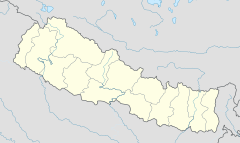Pashupatinath Temple (Nepali: पशुपतिनाथको मन्दिर) is one of the biggest Hindu temples of Lord Shiva in the world, located on the banks of the Bagmati River in the eastern part of Kathmandu, the capital of Nepal. The temple served as the seat of the national deity, Lord Pashupatinath, until Nepal wassecularized The temple is listed in UNESCO World Heritage Sites list.
Believers in Pashupatinath (mainly Hindus) are allowed to enter the temple premises. Anyone not born in Nepal or India is considered a non-Hindu by the temple authorities. Non-Hindu visitors are allowed to have a look at the temple from the other bank of Bagmati river.
It is regarded as the most sacred among the temples of Lord Shiva ( Pashupati ) .
Legend
Pashupatinath Temple is the oldest Hindu temple in Kathmandu. It is not known for certain when Pashupatinath Temple was founded. But according to Nepal Mahatmaya and Himvatkhanda, one day Lord Shiva grew tired of his palace atop Mt. Kailash and so went in search of a place where he could escape to. He discovered Kathmandu Valley and, without telling anyone, he ran away from his palace and came to live in the Valley. He gained great fame there as Pashupati, Lord of the Animals, before the other gods discovered his hiding place and came to fetch him. He disguised himself as a majestic deer and would not help the other gods when they asked for his help. When Shiva did not yield to their pleas, they planned to use force. God Vishnu grabbed him by his horns and they shattered into pieces. Vishnu established a temple and used the broken horns to form a linga on the bank of the Bagmati River. As time went by, the temple was buried and forgotten. Then a cow was known to have secretly sprinkled her milk over the mound. Apparently, when the cow herders dug around the spot, they found the lost lingas and again built a temple in reverence.
History
The temple was first established in the 17th century. The priests who perform the services at this temple have been Bhat-Brahmins from South India (Karnataka) origin since last 350 years. The priests of Pashaputinath are called Bhattas and the chief priest is called Mool Bhatt or Raval. The chief priest is answerable only to the King of Nepal and reports to him on temple matters on a periodic basis.
This tradition is supposed to have started by the request of Adi Shankaracharya who sought to unify the different states of Bharatam (Unified India) by encouraging cultural exchange. The unique feature of this temple is that only 4 priests can touch the idol. This tradition is supposed to have started by Sage Shankaracharya in 8th century, ostensibly to stop human sacrifice which was prevalent in that temple. This procedure is also followed in other temples around India which were sanctified by Adi Shankaracharya. Malla kings honoured the request of Adi shankarachaya as latter being one of the greatest ever Hindu acharyas.
However,this tradition was recently changed after the historic revolution in Nepal which demolished the monarchy and established democracy where Nepalese priests supported by the anti- Indian Maoists government.There was widespread protests by most Nepalese as they saw this as an intereference in their religion.
Temple architecture
The temple is of pagoda style of architecture. All the features of pagoda style is founded here like cubic constructions, beautifully carved wooden rafters on which they rest (tundal). The two level roofs are of copper with gold covering. It has four main doors, all covered with silver sheets. This temple has agold pinnacle, (Gajur), which is a symbol of religious thought. The western door has a statue of large bull or Nandi, again covered in gold. The deity is of black stone, about 6 feet in height and the same in circumference.
Vasukinath lies to the east of Pashupatinath.
Pashupatinath Temple Panorama of the Pashupatinath Temple from the other bank of Bagmati river, Kathmandu, Nepal.
estivals
Controversy of 2009
The priests are called Bhattas and the Chief Priest is known asMool Bhatt or Raval. The chief priests of temple have been Brahmins from South India since Malla era. This, along with the alleged corruption within temple had been an issue among Nepalese people.
In January 2009, after the forced resignation by the chief priest of Pashupatinath temple, the Maoist-led government of Nepal "hand picked" Nepalese priest to the temple, thus bypassing the temple's long-standing requirement. This appointment was contested by the Bhandaris of the temple, stating that they were not against the appointment of Nepalese priests but against the appointment without proper procedure. After the appointment was challenged in the court of laws, the appointment was overruled by Supreme Court of Nepal. However, the government did not heed the ruling and continued with its decision. This led to a public outrage and protests over lack of transparency. The paramilitary group of CPN (Maoist), called YCL, attacked the protesters leading to over a dozen injuries. Lawmakers and party activists of the opposition parties joined protests and stated that their support were with the Bhandaris and other protesters.
However, after long dissatisfaction and protest of Hindus both inside and outside Nepal, the government reverted its decision and reinstated Indian priests.



